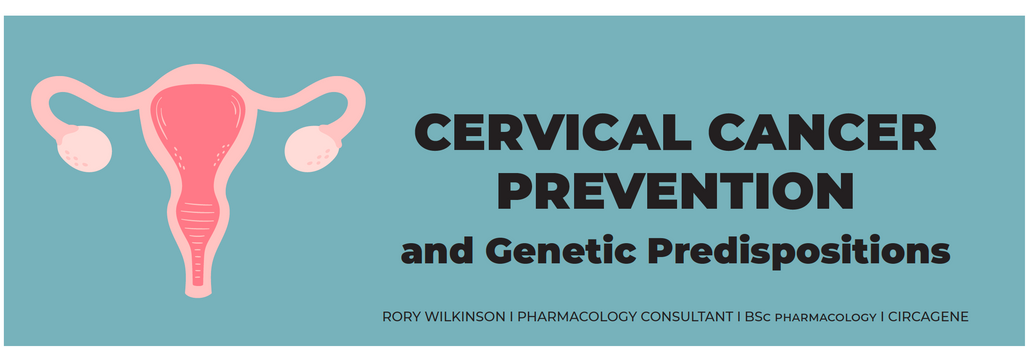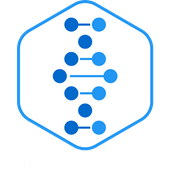
Cervical Cancer remains to be a major cause of female fatality worldwide. The disease usually develops in the form of a squamous cell carcinoma following infection by the human papillomavirus, however the cancer can also develop in the form of an adenocarcinoma with roughly 1% of women who are infected with the virus developing the disease (1,2). The average age range for cervical cancer diagnosis is between the ages of 34 and 44, with disease development rarely occurring in women below the age of 20. Having said this many women are not aware that their risk of developing this disease is still present as they age, with around 20% of cases occurring in women over the age of 65 (3). Despite the implementation of effective HPV vaccines and PAP/smear tests to reduce the chances of HPV infection and detect the early signs of pre-cancer markers, it is estimated that in 2021 over 14,000 women were diagnosed with cervical cancer, leading to around 4000 deaths in the United States (3).
What separates cervical cancers from the majority of other cancers is that it is largely preventable. Due to the fact that almost all cases are brought about via infection with HPV. It is important to highlight however how common HPV infection is in comparison to cervical cancer. Therefore, becoming infected with this virus does not necessarily mean you will develop cervical cancer, which is an extremely common myth within society. Having said this, as a result of the link between HPV and cervical cancer we have been able to develop vaccines which reduce the chances of developing cervical cancer by nearly 90% (4). Furthermore, as previously mentioned the development of PAP/smear tests which are able to detect minor precancer or cell changes on the cervix which could potentially progress into cervical cancer, has greatly improved survival rates. Women can also now be tested for HPV infection, allowing yourself and the doctor to put in place the appropriate treatment required if the test comes back positive.
All of these new innovations have dramatically reduced the fatality rate of cervical cancer and we know these methods are working because in lesser developed countries where these technologies are unfortunately not available, mortality rates are significantly higher. The important message to take away from this is how important cancer prevention is. Due to the rapidly progressive and destructive nature of this disease, being able to prevent its development in the first place is our best chance of success.

As is the story with the majority of cancers, there have been a number of well-established genetic mutations which make some women more prone to cervical cancer than others. In fact, it has been established that around 36% of liability of HPV-associated cancer and precancer is determined by ordinary genetic variants. It is apparent that the majority of these genetic markers occur within the HLA gene, in particular the haplotypes; HLA-DRB1*15/HLA-DQB1*0602/HLA-DQA1*0102, HLA-B*0702/HLA-C*0702, and HLA-DRB1*0401/HLA-DQA1*0301, were seen in a study to be associated with increased risk of HPV16 and HPV18-associated cervical cancer, as well as the development of both squamous cell carcinoma and adenocarcinomas (5).
Our Solution
CircaGene is a genetic testing and bioinformatics company where the philosophy is based upon predictive genomics. We believe in the power of prevention as appose to solely reactive medicine and healthcare. Through the use of one of our saliva sample test kits, we are able to identify numerous genetic markers which may be associated with cervical or any other type of cancer.
Our individualised genetic reports provide you with the necessary preventative lifestyle and medical advice in order to prevent the development of cancers of which you may have a predisposition to. Our reports are not designed to scare our customers, but to instead correctly inform them .
This HLA gene is involved in helping our immune system distinguish between the body’s own proteins and proteins made by invaders such as bacteria and the HPV virus (6). These study findings therefore align with the role of the HLA gene in the immune system, suggesting certain individuals carrying HLA variants may be at a greater risk of HPV infection due to a compromised immune response. Therefore, making these individuals more likely to develop cervical cancer. It is likely that there are many other genetic markers for cervical cancer that are yet to be discovered, but we can be certain that genetics contributes in some way to our susceptibility to developing cervical cancer.
1.
CircaGene is a genetic testing and bioinformatics company where the philosophy is based upon predictive genomics. We believe in the power of prevention as appose to solely reactive medicine and healthcare. Through the use of one of our saliva sample test kits, we are able to identify numerous genetic markers which may be associated with cervical or any other type of cancer. Our individualised genetic reports provide you with the necessary preventative lifestyle and medical advice in order to prevent the development of cancers of which you may have a predisposition to. Our reports are not designed to scare our customers, but to instead correctly inform them of any potential predispositions, so they have the information they need in order to prevent the development of these destructive illnesses.
1. MSD Manual Professional Edition. 2022. Cervical Cancer - Gynecology and Obstetrics - MSD Manual Professional Edition. [online] Available at: <https://www.msdmanuals.com/en-gb/professional/gynecology-and-obstetrics/gynecologic-tumors/cervical-cancer> [Accessed 11 January 2022].
2. Schiffman, M., Glass, A., Wentzensen, N., Rush, B., Castle, P., Scott, D., Buckland, J., Sherman, M., Rydzak, G., Kirk, P., Lorincz, A., Wacholder, S. and Burk, R., 2011. A Long-term Prospective Study of Type-Specific Human Papillomavirus Infection and Risk of Cervical Neoplasia Among 20,000 Women in the Portland Kaiser Cohort Study. Cancer Epidemiology Biomarkers & Prevention, 20(7), pp.1398-1409.
3. Cancer.org. 2022. Cervical Cancer Statistics | Key Facts About Cervical Cancer. [online] Available at: <https://www.cancer.org/cancer/cervical-cancer/about/key-statistics.html> [Accessed 11 January 2022].
4. National Cancer Institute. 2022. Study Confirms HPV Vaccine Prevents Cervical Cancer. [online] Available at: <https://www.cancer.gov/news-events/cancer-currents-blog/2020/hpv-vaccine-prevents-cervical-cancer-sweden-study> [Accessed 11 January 2022].
5. Leo, P., Madeleine, M., Wang, S., Schwartz, S., Newell, F., Pettersson-Kymmer, U., Hemminki, K., Hallmans, G., Tiews, S., Steinberg, W., Rader, J., Castro, F., Safaeian, M., Franco, E., Coutlée, F., Ohlsson, C., Cortes, A., Marshall, M., Mukhopadhyay, P., Cremin, K., Johnson, L., Garland, S., Tabrizi, S., Wentzensen, N., Sitas, F., Little, J., Cruickshank, M., Frazer, I., Hildesheim, A. and Brown, M., 2017. Defining the genetic susceptibility to cervical neoplasia—A genome-wide association study. PLOS Genetics, 13(8), p.e1006866.
6. Medlineplus.gov. 2022. HLA-DRB1 gene: MedlinePlus Genetics. [online] Available at: <https://medlineplus.gov/genetics/gene/hla-drb1/#:~:text=The%20HLA%20complex%20helps%20the,that%20occurs%20in%20many%20species> [Accessed 11 January 2022].

COPYRIGHT © CIRCAGENE LTD ™ ALL RIGHTS RESERVED